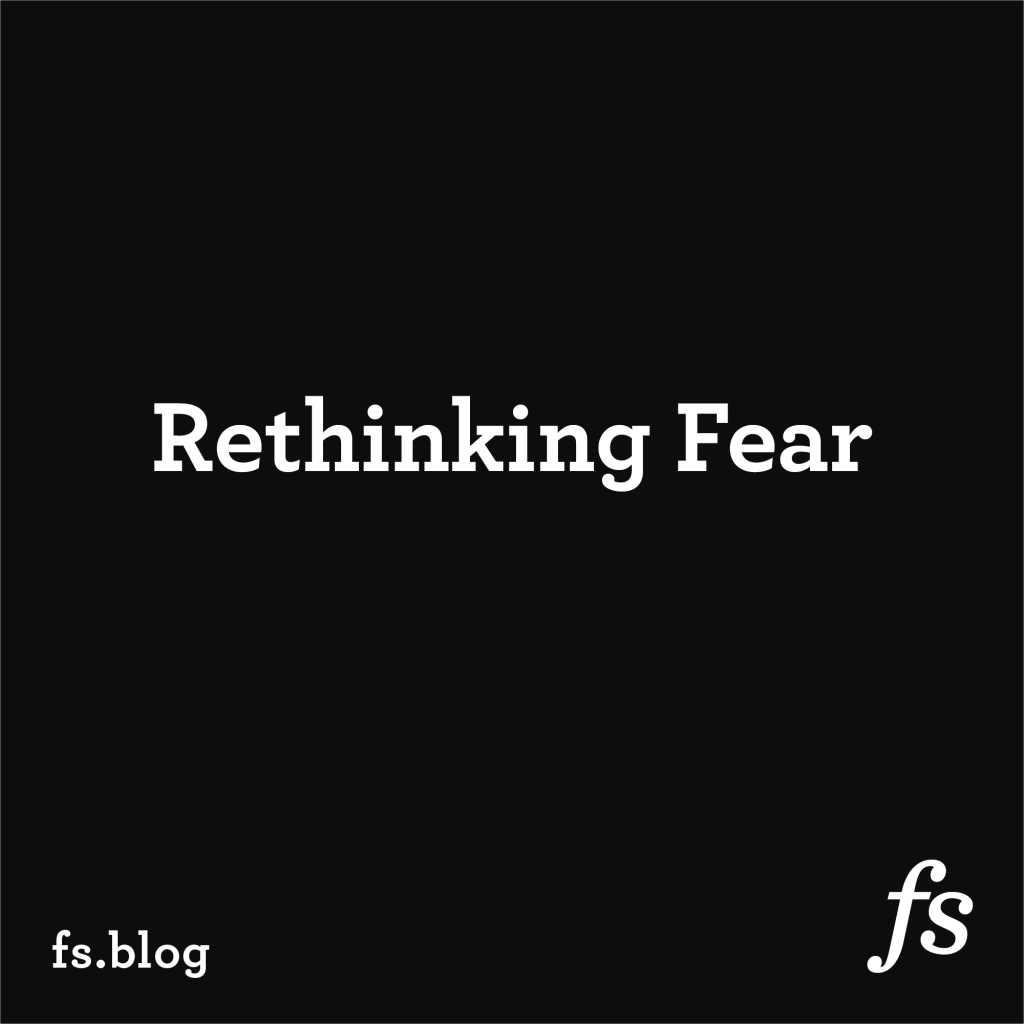Rethinking Fear
Blog: FS - Smart decisions
Fear is a state no one wants to embrace, yet for many of us it’s the background music to our lives. But by making friends with fear and understanding why it exists, we can become less vulnerable to harm—and less afraid. Read on to learn a better approach to fear.
***
In The Gift of Fear: Survival Signals That Protect Us From Violence, author Gavin de Becker argues that we all have an intuitive sense of when we are in danger. Drawing upon his experience as a high-stakes security specialist, he explains how we can protect ourselves by paying better attention to our gut feelings and not letting denial lead us to harm. Our intuition, honed by evolution and by a lifetime of experience, deserves more respect.
By telling us to value our intuition, de Becker isn’t telling anyone to live in fear permanently, always alert for possible risks. Quite the opposite. De Becker writes that we misunderstand the value of fear when we think that being constantly hypervigilant will keep us safe. Being afraid all the time doesn’t protect us from danger. Instead, he explains, by trusting that our gut feelings are accurate and learning key signals that portend risk, we can actually feel calmer and safer:
Far too many people are walking around in a constant state of vigilance, their intuition misinformed about what really poses danger. It needn’t be so. When you honor accurate intuitive signals and evaluate them without denial (believing that either the favorable or unfavorable outcome is possible), you need not be wary, for you will come to trust that you’ll be notified if there is something worthy of your attention. Fear will gain credibility because it won’t be applied wastefully.
When we walk around terrified all the time, we can’t pick out the signal from the noise. If you’re constantly scared, you can’t correctly notice when there is something genuine to fear. True fear is a momentary signal, not an ongoing state. De Becker writes that “if one feels fear of all people all the time, there is no signal reserved for the times when it’s really needed.”
What we fear the most is rarely what ends up happening. Fixating on particular dangers blinds us to others. We focus on checking the road for snakes and end up getting knocked over by a car. De Becker writes that it matters that we’re receptive to fear, not that we’re watching out for what scares us the most (though of course, different things pose different risks to different people, and we should evaluate accordingly.) After all, “we are far more open to signals when we don’t focus on the expectation of specific signals.”
Fear vs. anxiety
Fear is not the same as anxiety. Although people experiencing anxiety are often afraid of both the anxiety and what they presume to be its cause, these two states have different triggers. De Becker explains one of the key factors that differentiates the two:
Anxiety, unlike real fear, is always caused by uncertainty. It is caused, ultimately, by predictions in which you have little confidence. When you predict that you will be fired from your job and you are certain the prediction is correct, you don’t have anxiety about being fired. You might have anxiety about the things you can’t predict with certainty, such as the ramifications of losing the job. Predictions in which you have high confidence free you to respond, adjust, feel sadness, accept, prepare, or to do whatever is needed. Accordingly, anxiety is reduced by improving your prediction, thus increasing your certainty.
Understand that when we’re anxious, it’s because we’re uncertain. The solution to this, then, isn’t worrying more—it’s doing all we can to either find clarity or working to accept that uncertainty is part of life.
Using fear
What can we learn from de Becker’s call to rethink fear? We learn that we’ll be in a better position if we can face possible threats with a calm mind, alert to our internal signals but not anticipating every possible bad thing that could happen. While being told to stop panicking never helped anyone, we benefit by understanding that being overwhelmed by fear will hurt us more. Our imaginary fears harm us more than reality ever does.
If this approach sounds familiar, it’s because it echoes ideas from Stoic philosophy. Much like de Becker, the Stoics urged us to be realistic about the fact that bad things can and will happen to us throughout our lives. No one can escape that. Once we’ve faced that reality, some of the shock goes away and we can think about how to prepare. After all, catastrophe and tragedy are part of the journey, not an unexpected detour. Being aware and accepting of the inevitable terrible things that will happen is actually a critical tool in mitigating both their severity and impact.
We don’t need to live in fear to stay safe. A better approach is to be aware of the risks we face, accept that some are unknown or unpredictable, and do all we can to be prepared for any serious or imminent dangers. Then we can focus our energy on maintaining a calm mind and trusting that our intuition will protect us.
“We are more often frightened than hurt; and we suffer more from imagination than from reality.”
— Seneca
The Stoics also taught us that we should view terrible events as survivable. It would do us well to give ourselves more credit—we’ve all survived occurrences that once seemed like the worst-case scenario, and we can survive many more.
The post Rethinking Fear appeared first on Farnam Street.
Leave a Comment
You must be logged in to post a comment.








